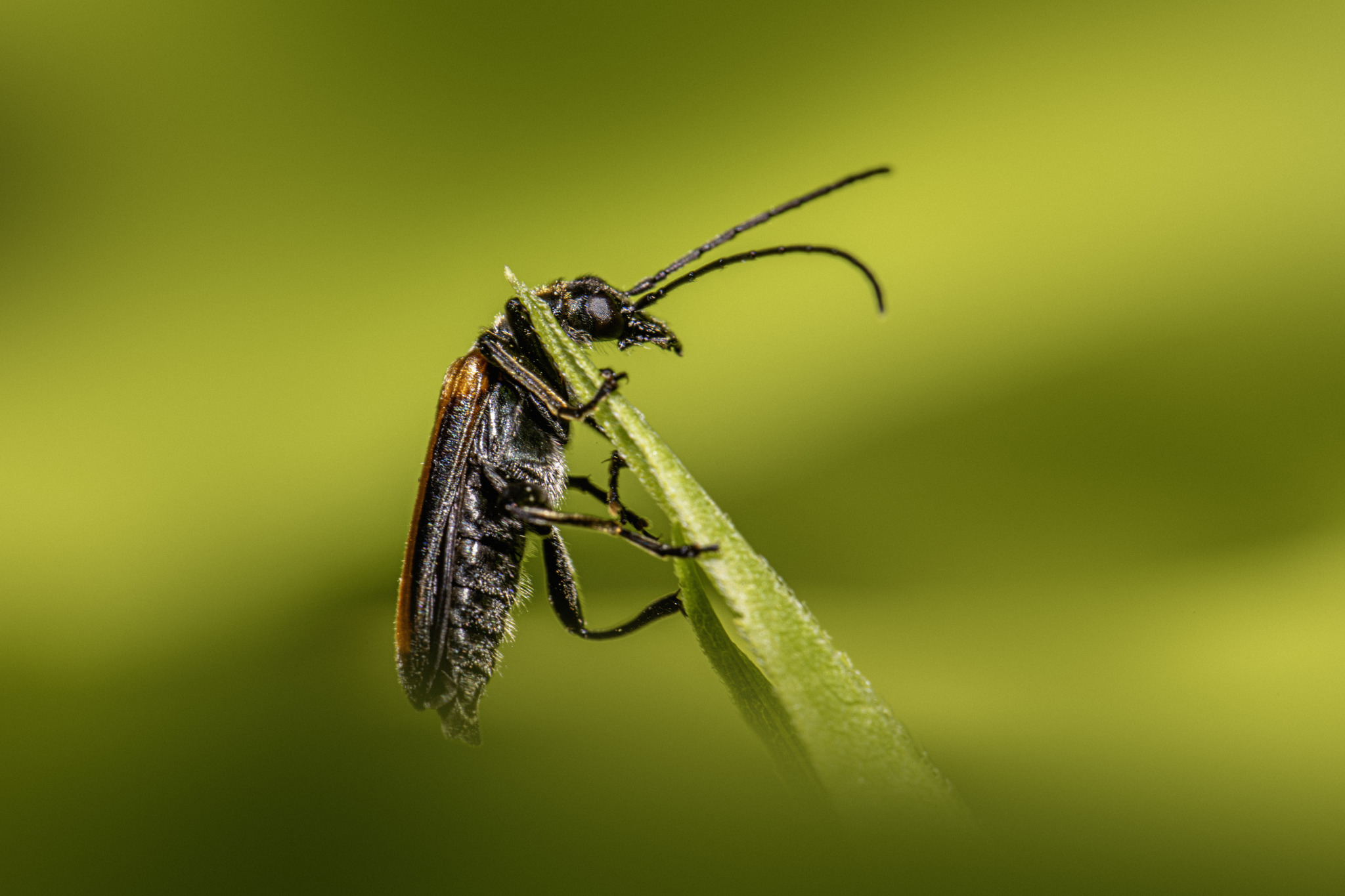Appearance:
- The False Blister Beetle is known for its striking green coloration with metallic reflections, which can vary from bright green to golden-green.
- They have an elongated body shape with a distinct head and thorax, typical of beetles.
- Habitat:
- These beetles are commonly found in meadows, gardens, and grassy areas where they feed on flowers and pollen.
- They are often observed on various plants, especially those with abundant blooms.
- Behavior:
- False Blister Beetles are herbivorous and primarily feed on pollen and flowers. They are attracted to flowering plants and can sometimes be seen in large numbers during the flowering season.
- As beetles, they undergo complete metamorphosis, starting as eggs laid in the soil and progressing through larval and pupal stages before emerging as adults.
- Ecological Role:
- Like many flower-visiting beetles, False Blister Beetles play a role in pollination by transferring pollen between plants as they feed.
- Their presence in gardens and meadows contributes to the diversity of insect life and supports the ecosystem by aiding in plant reproduction.
- Identification:
- The distinctive green coloration and elongated body shape are key identifiers of the False Blister Beetle.
- They may resemble other metallic green beetles, but their specific features, including size and behavior, help distinguish them.
- Conservation:
- False Blister Beetles are generally not considered threatened or endangered, as they are adaptable and can thrive in a variety of habitats.
- Conservation efforts often focus on preserving diverse habitats that support their natural behaviors and interactions with plants.
Additional Notes:
- False Blister Beetles vs. True Blister Beetles: It’s important to note that False Blister Beetles (family Oedemeridae) are distinct from True Blister Beetles (family Meloidae), which are known for their defensive secretion of cantharidin.
- Behavioral Observations: Observing their feeding habits and interactions with plants can provide insights into their ecological role and preferences.
In summary, the False Blister Beetle (Crysanthia viridissima) is a visually striking beetle with metallic green coloration, commonly found in meadows and gardens where they contribute to pollination and ecosystem diversity. Their herbivorous diet and attractive appearance make them an interesting subject for entomological study and appreciation in natural settings.
Visited 708 times, 4 visit(s) today
Views: 1094
Subscribe to the newsletter:
